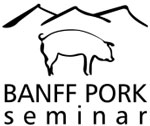



Checklist of Value-Added Opportunities for Pork Products
Value-added strategies of leading retail, food service and meat industry entities will dominate the animal protein market for years to come. With a shift from a commodity driven market to a consumer driven one, it will become more important to understand consumer preference, attitude and acceptance of meat as driving factors, Andrzej Sosnicki of PIC North America told the 2011 Banff Pork Seminar.
One sign of that is the emergence of food technology development centers focused on driving consumer-friendly meal solutions. Here are some key food trends in North America, as identified by Mr Sosnicki.
Natural/organic = healthy
This category has attracted all sorts of 'trendlets', including environmental consciousness and sustainability, fair trade, local production, energy conservation, natural, minimally processed or stripped down formulations.

Health and wellness
This has bigger implications than 'organic', according to Mr Sosnicki. While any product can be formulated to be branded organic, not all are healthy, he said. Health and wellness covers components such as diabetes and obesity, children's health, food safety, women's health, allergies and immunity. The animal industry is just starting to develop this segment.
Age awareness
The doubling of the over-65 population by 2030 means increased need for everything from easy-to-open containers to food safety concerns based on conflicting issues of tamper-resistant containers that do not require sophisticated kitchen tools.
Portion control
Essentially a health tool, this trend started in earnest in 2006 and is merged with the ongoing demand for convenience, said Mr Sosnicki. It offers opportunity to meet consumer needs and ensure consistent package weights, and therefore price, within a category.
Globalisation
Asian, Hispanic, African American and other ethnic groups will make up more than 35 per cent of US population in 2012. Cultural traffic and instant global information enables rapid diffusion of once regional preferences. Ethic influences as part of the speciality food category reached approximately $35 billion in 2007.
Kosher and halal certification
Religious oversight of food encompasses food safety, health and wellness, taste and quality, and ethnicity and spiritualism.
This is by no means a complete list of value-added opportunities, said Mr Sosnicki. It does not include large-scale and niche opportunities such as those associated with breed-specific products or intangible, such as organic or welfare-friendly criteria.
This report was prepared by Meristem Land and Science.
March 2011








